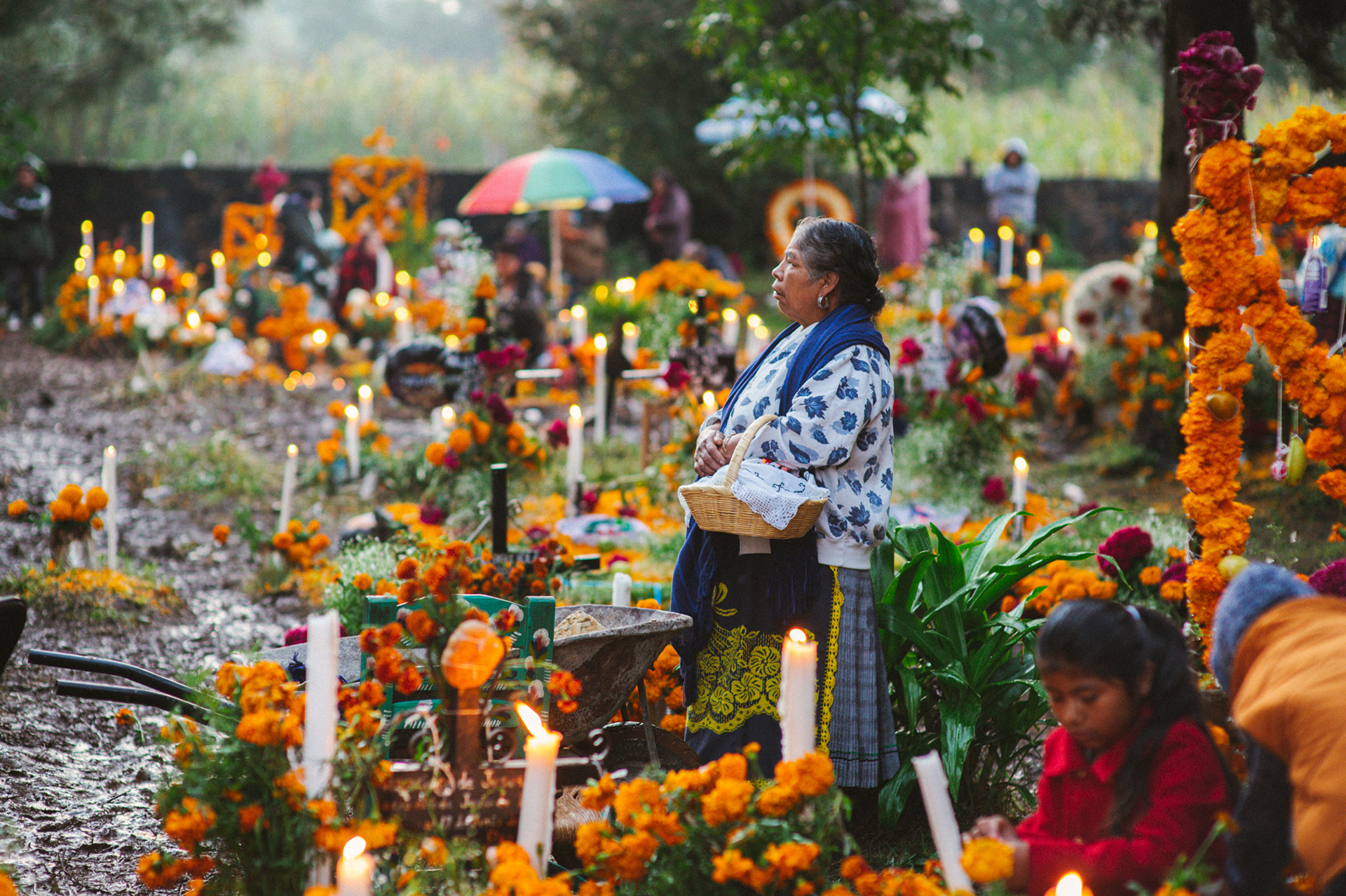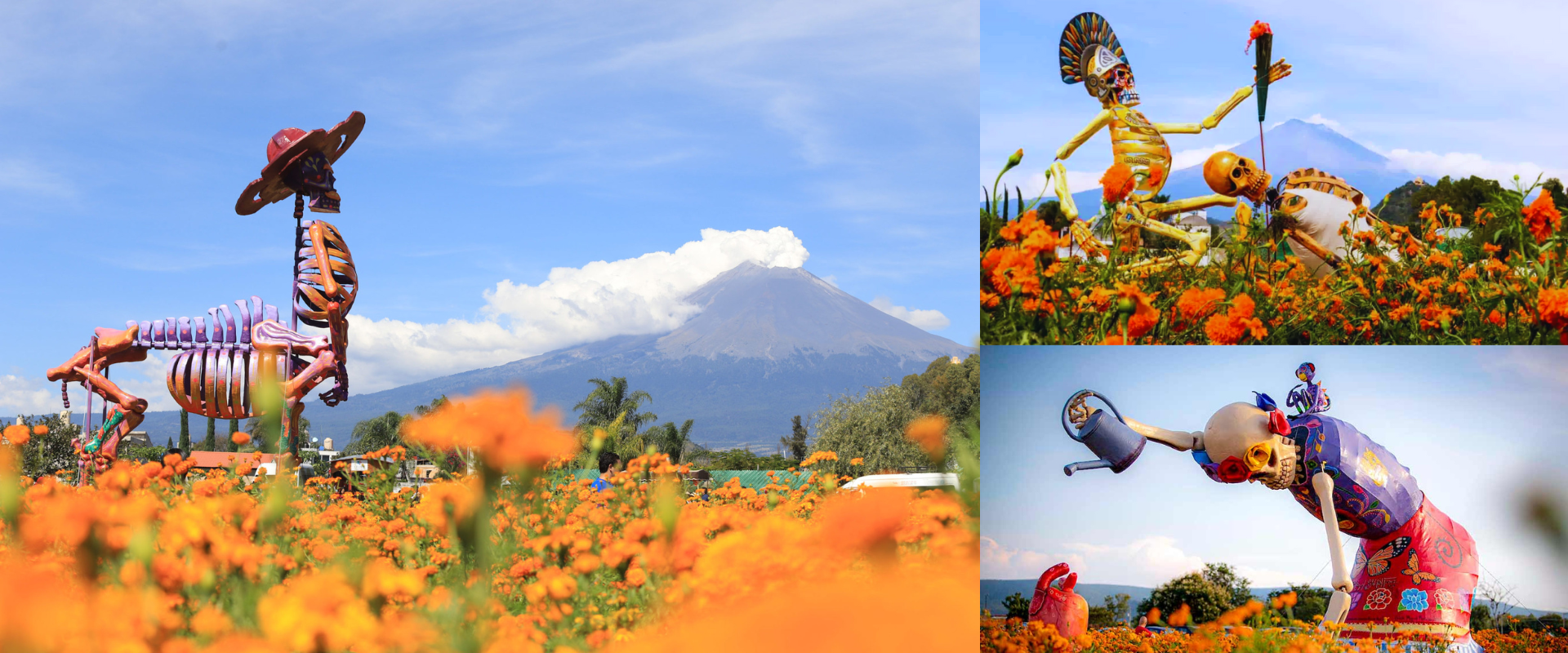
Día de Muertos: Think Oaxaca Is It? Check Out These 5 Must-See Alternatives
Oaxaca might be the go-to for Day of the Dead, but it’s not the only magical place to celebrate it. Discover five authentic alternatives across Mexico—from Mayan rituals to jungle feasts.

Content
They highlight our work



Unique trips in Mexico.
Tailor made for you.
Request your tripTailor made for you.
Let a local guide help you plan your trip to Mexico
Start tailor-made tripDía de Muertos is one of Mexico’s most vibrant and meaningful traditions—a celebration of life, memory, and the unbreakable bond between the living and the dead. Rooted in pre-Hispanic traditions, this holiday takes place in early November, honoring deceased loved ones with offerings, rituals, and family gatherings. Homes, cemeteries, and public spaces fill with colorful altars, called ofrendas, decorated with marigolds (cempasúchil), candles, incense, sugar skulls, and traditional foods, all meant to guide and welcome the spirits of the departed back to the world of the living, if only for a night.
When it comes to experiencing Día de Muertos, Oaxaca is the most famous destination—and for good reason. Its colorful celebrations, grand parades, and deeply rooted traditions make it a top choice for travelers. But with its rising popularity comes higher prices: during these dates, hotel rates can increase by up to 124%, flights become significantly more expensive, and many tours sell out weeks in advance.
If you’re looking for a more authentic, off-the-beaten-path experience, we’ve got you covered.
Here are five incredible destinations where you can immerse yourself in the magic of Día de Muertos—without the Oaxaca crowds.
1. Puebla: A Journey Through Catrinas, Pan de Muerto, and Ofrendas

In Puebla, Día de Muertos is celebrated with vibrant artistry and heartfelt traditions. The town of Atlixco transforms into a breathtaking display of giant catrinas, symbolizing the joyful embrace of life and death. Walking through its flower-adorned streets feels like stepping into a living altar.
For a hands-on experience, head to the charming town of Tochimilco, where you can bake your own pan de muerto using ancestral techniques. As the bread bakes, enjoy a home-cooked meal infused with local flavors, connecting you to the spirit of this celebration.
To fully embrace the tradition, join a workshop on ofrendas, where you’ll learn the symbolism behind each element while crafting your own altar. From the flickering candles to the delicate papel picado, every detail carries a story.
With its mix of cultural heritage, immersive experiences, and artistic displays, Puebla offers a deeply authentic way to celebrate Día de Muertos.
2. Mérida: A Mayan Tribute to Life and Death
.png)
In the Yucatán Peninsula, Día de Muertos takes on a distinct Mayan identity. Known as Hanal Pixán, or “Food for the Souls,” this sacred tradition blends ancient rituals with heartfelt celebrations.
A visit to the town of Tekit offers a profound glimpse into this unique perspective on the afterlife. Walk through local cemeteries, where families gather to honor their ancestors with prayers, music, and offerings. Step inside Mayan homes, where families carefully prepare altars adorned with food, candles, and symbolic decorations.
No Hanal Pixán experience is complete without tasting pib, a traditional underground-baked tamal made to nourish both the living and the departed. To end the day, take a refreshing dip in a cenote, a sacred place in Mayan culture believed to connect the earthly and spiritual worlds.
Mérida’s blend of Mayan traditions, ancestral rituals, and culinary heritage makes it an unforgettable place to experience Día de Muertos from a different perspective.
3. Guadalajara: Walking the Path to the Afterlife
.png)
In Guadalajara, Día de Muertos is more than a celebration—it’s a journey through the ancient beliefs of Mexico’s indigenous cultures. Nowhere is this more evident than in the theatrical tour of El Camino del Mictlán, where visitors walk through a reenactment of the legendary nine-level path that souls must travel to reach their final resting place.
Beyond the myths, the city comes alive with workshops dedicated to ofrendas, tzompantlis (skull walls), and pan de muerto, allowing visitors to engage with the symbols of the tradition firsthand.
Whether you’re exploring the rich folklore of the Mictlán, crafting your own altar, or baking traditional pan de muerto, Guadalajara offers an immersive and unforgettable Día de Muertos experience filled with history, culture, and storytelling.
4. Quintana Roo: A Soulful Celebration in Selva Bonita
.png)
Deep in the lush jungles of Quintana Roo, Día de Muertos is an intimate and deeply spiritual experience. Families gather to create altars filled with traditional dishes, candles, and symbolic decorations, honoring their ancestors in a heartfelt ritual.
One of the most cherished traditions is the preparation of pib, a large, banana-leaf-wrapped tamal filled with seasoned meat and slow-cooked underground. Travelers can take part in this hands-on cooking experience, learning the ancestral techniques behind this sacred dish before sharing it in a communal feast.
Beyond the food, ceremonial gatherings fill the air with prayers, music, and storytelling, bringing generations together. This is a place where time slows down, allowing visitors to experience Día de Muertos in its most heartfelt and authentic form.
5. Mexico City: A Feast for the Senses at Mercado de Jamaica
.png)
While Mexico City is one of the most exciting places to experience Día de Muertos, hotel availability for this year is already extremely limited—so planning ahead is key. Still, we couldn’t leave it off the list.
This massive, vibrant city offers a unique and immersive way to experience Día de Muertos—through its vibrant markets and rich culinary traditions. At Mercado Jamaica, the city’s only 24-hour flower market, the air is filled with the scent of cempasúchil and copal incense, while colorful ofrendas line the stalls, showcasing the deep connection between food and remembrance.
One of the best ways to explore this tradition is through a guided food tour that takes you deep into the heart of the market. You’ll taste traditional treats like pan de muerto, a soft, orange blossom-infused bread dusted with sugar, and calabaza en tacha, pumpkin slow-cooked in piloncillo syrup until irresistibly tender. Don’t miss the famous green chorizo tacos, a local specialty packed with bold flavors.
Beyond the food, the experience is a deep dive into the meaning behind Día de Muertos altars—understanding the symbolism of candles, flowers, and offerings while surrounded by the very artisans who create them. Whether you’re indulging in ancestral beverages like pulque or simply soaking in the festive atmosphere, Mexico City’s Mercado de Jamaica is a must-visit destination for those looking to experience Día de Muertos through taste, scent, and tradition.
Día de Muertos is more than just a holiday—it’s a window into Mexico’s deep-rooted traditions, where life and death intertwine in a celebration of memory, love, and culture. While Oaxaca remains a popular destination, these five places offer authentic and unforgettable ways to experience this sacred tradition—whether through food, art, ancient rituals, or heartfelt ceremonies.
At Rutopía, we believe in traveling differently—not as tourists, but as true explorers, immersing ourselves in local traditions and discovering Mexico beyond the obvious. If you’re looking for a Día de Muertos experience that feels real, personal, and unforgettable, let us take you there.
Join us on this
journey
Plan your trip with usjourney




